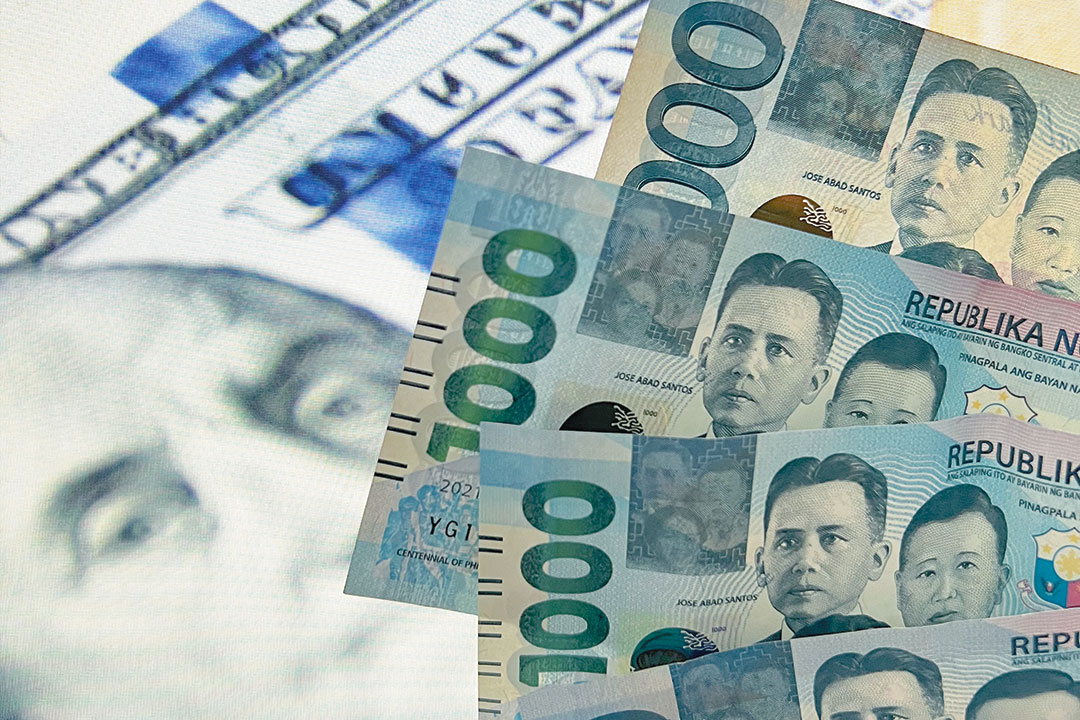Yields on government debt end flat ahead of PHL data
YIELDS ON government securities (GS) traded in the secondary market were flat last week as market players await inflation data due for release on Thursday.
GS yields dipped by an average of 0.3 basis point (bp) week on week, according to the PHP Bloomberg Valuation Service (BVAL) Reference Rates as of Aug. 30 published on the Philippine Dealing System’s website.
The secondary market saw mixed movements in terms of yields. At the short end of the yield curve, the 91-day Treasury bills (T-bill) went down by 0.6 bp to fetch 3.319%. Meanwhile, the rate of the 182- and 364-day T-bills went up by 4.1 bps and 0.8 bp to yield 3.518% and 3.687%, respectively.
At the belly, all tenors rallied except for the two-year debt paper, which saw its yield edge up by 0.7 bp to 3.904%. On the other hand, rates of the three-, 4-, 5-, and 7-year Treasury bonds (T-bond) went down by 0.2 bp (3.992%), 0.3 bp (4.083%), 0.1 bp (4.173%), and 0.4 bp (4.322%), respectively.
At the long end, yields on the 10-, 20-, and 25-year T-bonds went down by 1.9 bps, 2.1 bps, and 3.8 bps to 4.459%, 4.813%, and 4.79%, respectively.
“Most local interest rate benchmarks were slightly lower week-on-week…amid market expectations on further easing of the latest inflation data for August to one-percent levels (from 2.4% in July), as well as reiteration by local monetary authorities about a possible cut in local policy rate by 0.25 percentage points for the rest of 2019 and a possible cut in the reserve requirement (RRR) of large banks anytime soon,” Rizal Commercial Banking Corp. economist Michael L. Ricafort said in an e-mail.
“Stronger peso exchange rate versus the US dollar recently also supported the latest easing in most PHP BVAL yields,” Mr. Ricafort added.
Mr. Ricafort said lower global bond yields and a possible interest rate cut by the US Federal Reserve at its own policy meeting this month “also supported the latest slight week-on-week declines in local interest rate benchmarks.”
Bangko Sentral ng Pilipinas (BSP) chief Benjamin E. Diokno last week said the central bank is looking at cutting benchmark interest rates by another 25 bps before the end of the year.
The central bank has cut benchmark interest rates by a total of 50 bps so far this year — by 25 bp each on May 9 and Aug. 8 — to 4.25% for the overnight reverse repurchase rate, 4.75% for overnight lending and 3.75% for overnight deposit, partially dialing back the 175-bp cumulative hikes triggered last year by successive multi-year high inflation that peaked at a nine-year high.
Meanwhile, Mr. Diokno earlier said another cut in banks’ reserve ratio could happen anytime towards the next policy review on Sept. 26 — the sixth for the year. He had said that the Monetary Board’s consensus is to “pre-announce” plans for the RRR on a quarterly basis.
The RRR now stands at 16% for big banks and six percent for thrift banks after the phased 200-bp cut implemented after an off-cycle meeting last May. The RRR of rural and cooperative lenders was also cut to four percent from five percent effective May 31.
The central bank chief is committed to bring down the reserve requirement down to single digit when he ends his term in 2023.
Meanwhile, in an e-mail to reporters last Friday, the BSP’s Department of Economic Research said it expects inflation in August to settle within the 1.3-2.1% range due to lower fuel, rice, and power prices. This compares to the 2.4% inflation rate logged in July and 6.4% in August last year.
The lower end of the BSP’s estimate matches the 1.3% print logged in June, July, and August 2016 and will the slowest reading since the 0.9% clip posted in May 2016. Meanwhile, the upper end of the forecast range is equal to November 2016’s 2.1% pace and would be the slowest since October 2016’s 1.8%.
A BusinessWorld poll of 12 economists late last week yielded a median inflation estimate of 1.8% for August, settling above the midpoint of the 1.3-2.1% forecast range provided by the BSP’s Department of Economic Research.
The Philippine Statistics Authority will report August inflation data on Thursday.
Meanwhile, the US Federal Reserve cut rates for the first time in more than a decade in July.
In a speech at the annual Fed retreat at Jackson Hole, Wyoming last Aug. 23, Fed Chief Jerome Powell pledged to “act as appropriate to sustain the expansion” and noted that the “economy is close to both goals” of the Fed’s dual mandate of promoting full employment and stable prices.
Following the release of the Fed’s policy statement in July, Mr. Powell said in a news conference that the easing move is “not the beginning of a long series of rate cuts” although he also noted that it does not mean that “it’s just one rate cut.”
For this week, Mr. Ricafort said bond yields may continue to rally following the release of likely slower Philippine inflation data.
“For the coming week, local interest rate benchmarks…could still continue their easing/declining trend, especially short-term tenors…if the latest inflation…would go down further to 1% levels for the month of August… [That] could support further easing in local policy rates and also could support further cut in RRR of large banks soon…,” Mr. Ricafort said.
“Any possible cut in Fed funds rate at the next Fed rate-setting meeting on September 18…as well as the underlying easing trend in bond yield benchmarks in the US and in other developed countries are external factors [that] could support further easing of local monetary policy.” — Luz Wendy T. Noble with Reuters



